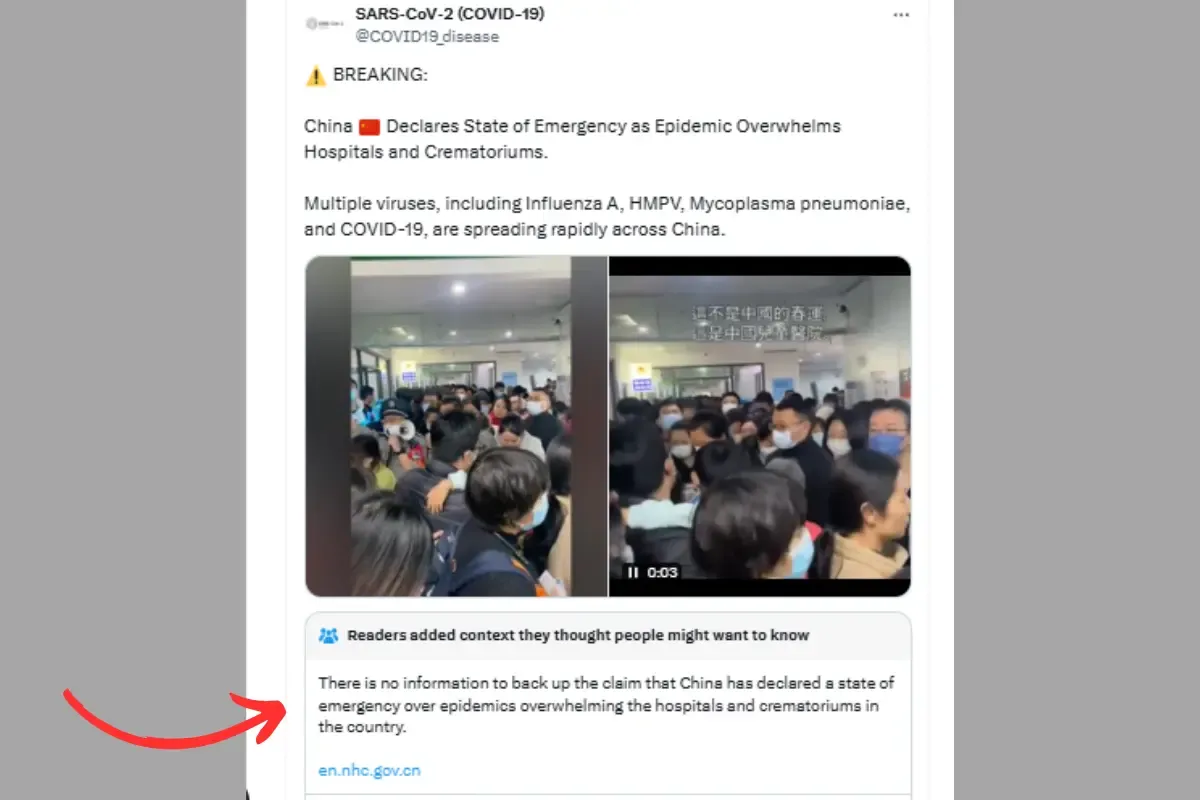HMPV Outbreak in China: Social media is buzzing with reports of a potential new pandemic emerging in China, with many dubbing it “Pandemic 2.0.” This has caused Covid-19 to trend on X, accompanied by numerous videos showing overcrowded hospitals in China. Reports suggest a significant rise in respiratory infections, potentially driven by Human Metapneumovirus (HMPV), leading to overwhelmed health systems. Despite alarming posts, Chinese authorities and the World Health Organization (WHO) have not declared an emergency yet.
Social Media Reports: Is China Facing an HMPV Outbreak?
Social media users on platforms like X (formerly Twitter) are sharing videos purportedly showing overcrowded hospitals in China. Posts suggest that HMPV is rapidly spreading alongside other viruses such as Influenza A, Mycoplasma pneumoniae, and Covid-19.
One X user, Kanchan Gupta, who claims to be a senior advisory official in the Government of India, shared, “China is witnessing an outbreak of the Human Metapneumovirus (HMPV) five years after the Covid-19 pandemic.”
China is witnessing an outbreak of the human metapneumovirus (HMPV) five years after the Covid-19 pandemic.
Videos shared online show crowded Chinese hospitals. The videos and posts say there is a surge of multiple viruses, including influenza A, HMPV, Mycoplasma Pneumoniae, and…— Kanchan Gupta 🇮🇳 (@KanchanGupta) January 3, 2025
The SARS-CoV-2 (COVID-19) handle on X also contributed to the ongoing discussion about the virus outbreak in China. It posted, “China Declares State of Emergency as Epidemic Overwhelms Hospitals and Crematoriums. Multiple viruses, including Influenza A, HMPV, Mycoplasma pneumoniae, and COVID-19, are spreading rapidly across China.”

However, X later flagged these claims with an update stating, “There is no information to back up the claim that China has declared a state of emergency over epidemics overwhelming the hospitals and crematoriums in the country.”
What is Human Metapneumovirus (HMPV)?
Identified in 2001, Human Metapneumovirus (HMPV) belongs to the Pneumoviridae family, similar to respiratory syncytial virus (RSV). According to the US CDC, HMPV often causes respiratory infections resembling common colds or flu.
Symptoms of the Alleged New Virus in China
The CDC highlights that HMPV symptoms include:
Coughing
Runny or stuffy nose
Fever
Sore throat
Severe cases may involve shortness of breath, wheezing or complications like bronchitis and pneumonia. Vulnerable groups include children under five, older adults and those with weakened immune systems or chronic respiratory issues.
How Does HMPV Spread?
HMPV spreads through respiratory droplets, close contact or touching contaminated surfaces and then the face. Like many viruses, it follows a seasonal pattern, typically peaking in late winter and spring in temperate climates.
Prevention Strategies to Combat HMPV
The CDC advises the following to prevent HMPV and other respiratory illnesses:
Wash hands frequently with soap and water.
Avoid touching the face with unwashed hands.
Wear masks in crowded areas.
Stay home when unwell.
Clean commonly touched surfaces regularly.
Diagnosis and Current Treatments for HMPV
HMPV is diagnosed via nucleic acid tests, immunoassays, or antigen detection, typically reserved for severe cases or outbreak studies. Currently, there is no specific antiviral treatment or vaccine. Managing symptoms through rest, hydration and over-the-counter medications is recommended, with hospital care for severe cases.
Connection Between HMPV and the Covid-19 Pandemic
Experts caution against drawing direct parallels between HMPV and Covid-19. While both can cause respiratory illnesses, HMPV is not a new virus. Its seasonal surges have been observed previously, and its current spread may be amplified by the global re-exposure to viruses post-Covid-19 lockdowns.

